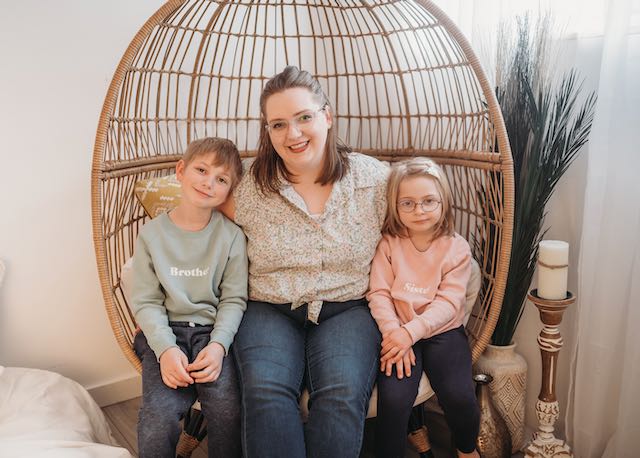Sleep Sacks vs. Swaddle for Newborns: Navigating Safe Sleep Practices
When it comes to ensuring a safe and peaceful sleep environment for newborns, parents and caregivers are often faced with a ton of information. We know we shouldn't use a blanket, but should we swaddle with a blanket, a special swaddle bag, or just use a sleep bag? With so many options to consider, its hard.
One thing I know as a mom of two is that this is just information for you to consider. I've added best practices from Government of Canada and the Government of British Columbia as they influence the types of products on the market, and general baby safety.
The Safety Trio: Why Sleep Sacks Shine
The primary advantage of using a sleep sack with a newborn is the elimination of loose blankets from the sleep environment. This measure significantly reduces the risk of suffocation or overheating during sleep.
Sleep sacks come with thermal regulation ratings, ranging from 0.5 TOG to 2.5 TOG. These standardized ratings indicate the product's ability to contribute to maintaining an optimal temperature in various room conditions. Consistent temperature can help your baby sleep - we often hear about how this is a key factor in a well rested newborn and toddler.
The correct sizing of a sleep sack is paramount for the safety. Sleep sacks for newborns do come in a variety of sizes, and you don't want to size up too quickly. Choosing a sleep sack that fits snugly but allows for freedom of movement. A sleep sack that is too large may pose risks such as slipping down inside, potentially leading to overheating or suffocation. Conversely, a sleep sack that is too small may restrict the baby's ability to move their hips and legs freely, presenting dangers, especially if the baby rolls onto their tummy.
There are many options to consider when choosing a sleep sack, we have a few recommendations on making the right choice for your family.

Embracing the Comfort: The Benefits of Swaddling
Swaddling provides infants with a sense of security by mimicking the cozy and confined feeling of the womb. This snug wrapping has been shown to promote better sleep quality, potentially leading to longer and more restful periods of slumber.
For many parents, swaddling offers a tangible way to soothe and comfort their newborns. The practice can create a calming bedtime routine, providing both infants and parents with a sense of predictability and tranquility during sleep routines.

Striking the Right Balance: Safe Swaddling Practices
For parents who opt for swaddling, adherence to safe practices is important.
Best practices for swaddling includes ensuring baby is put to sleep on their back, and use the proper technique by wrapping from the shoulders down, leaving hands and arms free, and maintaining a secure yet breathable swaddle.
Swaddle not too tightly or loosely. Make sure you can fit 2 fingers between the blanket and the baby’s chest, and that baby can bend and move their legs.
It's crucial to consider the baby's age, avoiding swaddling beyond 2-3 months or when they can move independently to support a smooth transition in response to their evolving needs. Once baby starts rolling, this is when it's best to consider a sleep sack as a crib option.
The Convenience of Swaddle Sleep Sacks
The realm of swaddle sleep sacks is one with less conclusive research. It's a hybrid product that has come to the market, and it's important to have some discernment with these products. Adhering to best practices of swaddles and sleep sacks is paramount for safety, not too tight, not too big, and switching out to arms out once they start moving and grooving.
For parents grappling with the elusive perfection of a swaddle, swaddle sleep sacks present a user-friendly alternative. The all-in-one design eliminates the need for intricate folding and tucking, making the swaddling process more accessible for parents seeking simplicity without compromising on effectiveness.
The inclusion of double zippers makes for easy diaper changes with ease without having to fully unswaddle their child. Furthermore, swaddle sleep bags are thermal rated. With ratings ranging from 0.5 TOG to 2.5 TOG, these sleep sacks ensure a comfortable and consistent temperature, creating an optimal setting for restful sleep. Take note that thermal ratings may change with use of wings or no wings.

Sleep Sacks vs. Swaddle for Newborns: Navigating Safe Sleep Practices
As a parent, this information serves as a guide, incorporating best practices from authoritative sources like the Government of Canada and the Government of British Columbia. The journey of choosing the right sleep solution is indeed a personal one, and with discernment, these insights can help you consider what will work.
You will have to stop swaddling, and when that happens you'll be wondering about blankets and sleep sacks again. So perhaps it is best to grab a swaddle bag and start the transition early? But also the swaddle just feels quintessential? No?





Leave a comment